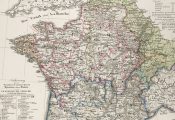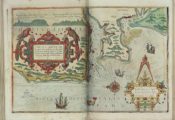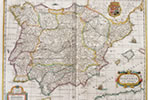Freedoms and money
The broad cultural freedoms of the cities of Amsterdam and Rotterdam helped the economic development of the Netherlands. Groups that were being persecuted elsewhere – Jews, French Huguenots – and refugees from persecution elsewhere in the Low Countries all found a home in Amsterdam, and their enterprise and energy helped propel that city’s rise to greatness. Along with a stock exchange, there was a flourishing and pioneering insurance system that was to prove invaluable in the rapid global expansion of maritime trade (even slaves were insured).
Dutch money became available for investment in a host of commercial ventures. By clever use of the newly invented joint-stock company, (the Dutch East India Company), they devised new forms of investment in, and ways of insuring against, commercial risk. When merchants, traders and planters sought help for their ventures on the far side of the Atlantic, Dutch money and expertise often proved crucial.
To the Americas and Asia
The Dutch Republic quickly established itself as a major player in global trade and settlement, rivalling and then usurping the position already created by the Portuguese. Equipped with a huge merchant marine and backed by a powerful navy, the Dutch established settlements in all corners of the globe and traded wherever good business was to be had.
They settled in North America (Manhattan Island), colonised Cape Colony in South Africa, founded plantations in Guyana in South America and, for a short while, displaced the Portuguese as the colonial power claiming control of Brazil. They put down commercial and colonial roots in what is now Indonesia, and forged trading links as far north as Japan.
Moral scruples
Inevitably, they were drawn to West Africa where, like other European powers, they constructed forts along the ‘Gold Coast’ (modern-day Ghana). Although the Dutch had shown some reluctance to allow slavery into the Netherlands, such moral scruples were quickly forgotten with the prospect of good business in the shipping of Africans across the Atlantic.
Once the Dutch had their own plantations in the Americas, the Dutch slave trade flourished. Much of that trade was dispatched via their own islands in the Caribbean (Curaçao, for example) for onward sale to Spanish settlements in Central and South America. As Portugal’s power waned and it lost the ability to hold on to its far-flung possessions and trading outposts, the Dutch were ideally positioned to step in and take over. By the 1640s, they had become the most important European trading power on the African coast.
And by the end of the slave trade, they had carried over half a million enslaved Africans across the Atlantic.





